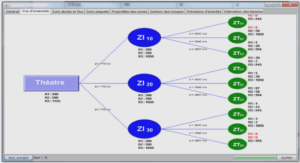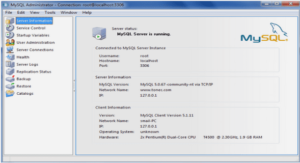The purposes of electric demand forecasting
Electric demand forecasting has a long history, almost begin with the operation of the electric power network. There are many purposes of using power load forecasting. For example, electricity forecasting demand using power system operation in short term and real-time, forecasting electricity demand using for expanding power grids and power generation resources to meet the electricity demand. Besides, load forecasting is also used to set the electricity tariff for each type of customer. For example, we have different electricity prices for commercial customers, industrial customers, and resident customers. Furthermore, the demand forecast also uses for building policies in Demand Side Management programs, Demand Response, integrate renewable energy sources. Demand forecast using for calculating operational optimization for smart grid, and smart microgrid systems.
According to the electric load forecasting time frame, demand forecast can be divided into three types: a long-term forecast, medium-term forecast, and short-term forecast. In each type of load forecast, each customer or utility members are interested and used the result for many different purposes. For example, in power system operation, the electricity system operator will forecast the load for schedule planning and dispatching generator resources to meet the demand for electricity. Additionally, the electricity wholesaler and retailer can use the load forecast to predict electricity prices, which helps optimize the electricity trading plan.
Two approaches are Top-down and Bottom-up for load forecast.
To forecast electric load, often use historical data to predict future periods. In some cases, when we have a new energy demand, because we do not have historical data, then we will use the data planning and simulation model to forecast electric load. For example, when there is a new factory or a new commercial center, the load forecast will be used based on the power usage plan to provide load forecasting.
For the load with historical data, two methods are used: statistical methods (ARIMA, Polylinear Regression …) and use the artificial intelligence to forecast electrical load (SVM, Tree Decision, Neural Network…). The more development of information technology infrastructure, smart meter system, other measuring devices, the more data are available in the power system. Hence, applications in the operation electricity system are grown. The load forecasting models are also developed very quickly. Many studies have done and published in recent years. The power utilities are also very interested in this research area, and accurate load forecasts will help power utilities plan and operate more efficiently.
Although various industries have many inventories to store their products, in contrast to modern electricity technology, storing large amounts of electricity is still a challenge. Therefore, electricity must always be a balance between the amount of electricity generated and provided to the electric consumer immediately. In other words, power companies or grid power operators must continuously balance the demand and supply of electricity. The power demand forecast was used in all sections of the electricity industry.
Purposes of power demand forecasting are used for generation, transmission, and distribution power system planning, electric and energy system operation, financial planning, designing an electricity price rate, and demand-side management. Because of the significant role of demand forecasting in the operation of electricity companies, inaccurate load forecasting can lead to the financial trouble of a power company. Although power demand prediction is an essential contribution to the operation and planning of electrical systems, incorrect loading predictions can lead to devise failures or even a blackout power system. In general, the limitations of electricity storage and the need for electricity use by society have exciting consequences for load forecasting, such as complex seasonal models, the need to be extremely accurate, and the 24/7 data collection on the grid [1].
Load forecasting plays an essential role in all segments of power system planning and operation. Load forecasting is a crucial function to operate an electricity network efficiently, reliably, and economically. Therefore, power demand forecasting becomes a hotly debated issue recently. It is also essential information for evaluating the profitability of investments in new technologies for power companies [2].
The value of energy demand management becomes more critical in up-to-date decades. Because many energy resources are decreasing, emissions are increasing, and the development of renewable energy and clean energy required developing globally. Demand forecasting plays an essential role in state-owned and private enterprises in managing the demand and supply balance. Therefore, the use of models to accurately predict energy using trends is a vital subject for the electric power system [3].
Electric power characteristics of consumers
The demand for electricity customers may change over time, because personal activities in the hourly cycle, each time of the day, will have electricity usage different. Similarly, working day and weekend also has different levels of electricity usage; the months of the year also have different uses depending on the weather of each season of the year.
Depending on the character of the load types, such as electrical resident loadings, industrial electrical loads, commercial and administrative electrical loads, will have different periods of high electricity usage. During daily, electricity resident load will be much affected by human activity time in a load day, usually high in the early morning to near noontime and earlyevening time, at night time is the time to go to bed so low electric power load. Commercial electrical loads will change over time as commercial activities take place, which is also the time when there is large electricity consumption, the weekend load may be higher on weekdays. For administrative demand loads that will be closer to the administrative time, for example, the administrative time from 9h00 to 17h00, other times will consume less electrical energy. The industrial electrical load will depend on the technology line of customers using electricity. Several customers like aluminum smelters will use much electric power at night time when the prices are often lower than in another period.
INTRODUCTION |




